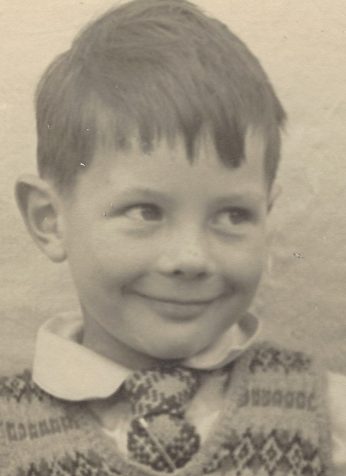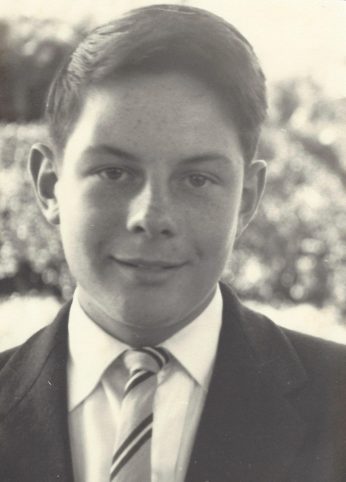
After being described as (one of) the UK’s Leading IT Analysts for nearly three decades, Richard Holway now prefers the title “Trusted Influencer”.
He is progressing a “pluralist” career after selling his company of 20 years, in late 2006, and using a lifetime’s networking experience to help other companies where he has joined the board as a NED.
In 2009 he established TechmarketView LLP with an old colleague, Anthony Miller.


Richard Holway’s first job was as a clerk with Somerset County Council. He describes it as the most boring thing he’s ever done in his life. After three months, the daughter of a neighbour showed him an advertisement for at trainee computer programmer for the King’s Fund for London, which was experimenting with the use of computers in the administration of the Health Service. In the interview he was asked to imagine he was the leader of a road gang with the task of digging a hole in the middle of the road. He was instructed to ask all the questions he would need to satisfy in order to carry out the task. Richard says that when he began work as an analyst he realised what a good question it was.
On 1 January 1966, he began work at the Hospitals Computer Centre for London. He went on a course to learn to program in PLAN, which was the BASIC assembler language for ICT. He was programming on an ICT 1905. One of the first programs he developed was for a consultant at one of the hospitals who was looking at the causes of testicular cancer. He wrote a program to identify if there were commonalities in people’s backgrounds that made them more susceptible to testicular cancer.
The training was mostly reading manuals, and being alongside people who knew a bit more. Richard was part of a team who wrote a complete system for all the London teaching hospitals and the hospitals in the south-east to do their payroll and then their administration. It was basic, but it did what it was intended to do. After two years, these activities of the King’s Fund was taken over by the National Health Service and Richard left to join Hoskyns.
At Hoskyns Richard was again “thrown in at the deep end’. He was asked to act as the programming manager at J Sainsbury’s, in their Stamford Road headquarters. He then did the same thing for the Equitable Life Insurance Company in New York – an incredible opportunity for a man in his early twenties.
At this time there were no standard application packages. The system software came with the machine, but you had to develop your own applications. John Hoskyns realised that companies would want standard applications. Application software packages had arrived. Also in 1969, Hoskyns introduced facilities management (or outsourcing as it is now more commonly known) into the UK through a contract with Willis Faber. At that time Britain was still a leader in computer hardware. Richard says Hoskyns was run by really able people. Geoff Unwin, founders John Hoskyns and John Pearce and others such as Michael Jackson and Alex D’Agapeyeff were leaders who taught by example and helped you. Asking for help was not considered a sign of weakness.
In 1977, Richard wrote a report for Hoskyns called, ‘Why Micros?’ At a board meeting, it was suggested that real computing would always be done on mainframes. But Hoskyns was never afraid to experiment with new technology. They built a hotel system for reservations and overnight billing based on the Intel 8080 chip, just to see if they could do it. The system was eventually installed in over 50% of all the hotels in the UK with more than 100 bedrooms. The systems cost around £20,000.
In the late seventies, Richard was appointed to the Executive Committee (board) of Hoskyns. The company had by that time been taken over by American Martin Marietta. In 1981 IBM launched the Personal Computer. Richard was keen that Hoskyns took on PCs which resulted in Richard launching Hoskyns Business Centres. After becoming a dealer for the IBM PC, Hoskyns became one of the largest providers of personal computers into the corporate marketplace in the UK.
In 1983, Richard was approached by Apple who wanted Hoskyns Business Centres to sell their products. At the time Apple was not producing corporate computers. Richard was given the opportunity to try out an Apple Lisa – a new computer with a mouse, a graphical user interface, and a dot matrix printer which produced pictures. Hoskyns became an Apple distributor and since then Richard has run all his businesses on Apple and Macintosh computers.
Believing there was no chance of equity in Hoskyns, it was time to leave. Wootton Jeffreys were headquartered near Woking which Richard found appealing after years of commuting to London. Wootton Jeffreys was a partnership owned by four men with equal shares. Part of Richard’s role was to prepare an exit strategy. In his first year, the company grew by 70 per cent. In the second year they were looking for buyers, but Richard and his team wanted to do a management buyout. They got finance for £2.2 million for Wootton Jeffreys, but the partners said it was not enough, as they wanted a valuation of £4 million. The partners were approached by Headland and offered £4 million, mostly in shares. Richard was given a year’s salary, the value of one per cent of the shares (which he had purchased), his BMW and the Apple Mac from his office. He says it was the best thing that could have happened as generally people stay in jobs far longer than they should.
In 1986 Richard founded Richard Holway Ltd. For the first ten years it was a two man operation with Mike Wright, a retired bank manager doing the analysis and transcribing data on to a big database. To pay the mortgage, Richard also worked for Apple on a one-day-per week basis as a consultant with the remit of helping Apple penetrate the corporate market.

By 1988, there were requests for more frequent updates in the data than once per year. In 1989, Richard launched a monthly magazine called SYSTEMhouse. It was printed on pink paper as he wanted it to look like the Financial Times. With no overheads, as he worked from home, within the first two years, the Holway Report was making about £250,000. The reports were bought by the companies who were being reported on as they wanted to compare themselves with their competitors.
In 1992, Richard was asked by Alan Cane, the then Technology Correspondent for the Financial Times for his view on Admiral who had produced consistent results over a long period. Richard described their results as ‘boringly consistent’ but was reported as “Holway thought that Admiral was ‘Boring’”. This led to the Boring Award which was given to companies who had had ten years of uninterrupted earnings per share growth. In the last twenty-five years only five awards have been given. The last two remaining were Capita and Sage but both have recently lost their Holway Boring Awards. Now there are none!, In 1996, Richard started a daily blog – HotViews – which today has a readership of over 25,000. It’s free and Richard considers it to be the most valuable part of TechMarketView’s marketing.
In 2000, Richard Holway Limited was sold to Ovum for a valuation of £6.8 million, of which half was cash. He had a two-year contract to work with Ovum as a director. Ovum really suffered when the Dot.com bubble burst. But a lot of hard work resulted in a successful AIM IPO in 2006 at a valuation of around £25m. But soon after DataMonitor acquired Ovum for over £40m.
Richard left in Jan 2006.
In 2008, Anthony Miller, and others from the previous team at Richard Holway Limited, wanted to set up a new company. This lead to the formation of TechMarketView LLP (TMV) which analyses and researches the tech market in the UK TMV has over 100 clients, mostly the majors like Microsoft, Fujitsu, ATOS etc. TMV continues to produce the daily HotViews as well as many detailed reports and ranking tables.
Richard believes the company is groundbreaking because there are no offices, everyone works from home, and they have revenues in excess of £1.5 million with no office premises overheads. There are eighteen people associated with it, but most don’t work full-time. Over 60% are female as TMV’s flexibly hours are very family friendly.
In the 1960s computer users spent the majority of their money on buying hardware Now, under 25 per cent of the total spend on technology is actually on the hardware. If you could not afford your own computer, you could rent time on a computer at a bureau.
In the 1970s and 1980s there were two major changes: packaged software was developed not just the likes of Excel, Word but accounting products like Sage and other industry specific products, and facilities management, where buyers of computers could outsource the running of their machine.
There has been huge fragmentation in the industry; whereas in the 60s and 70s a computer system would usually be using one brand to supply the systems, the operating software and the hardware; today most users buy their setup from many suppliers.
A few years ago all of a company’s data would be store on the premises, often only accessible on a single computer in a single location; now with cloud computing, it’s everywhere.
Artificial Intelligence is the hottest area of the moment with the British founded company DeepMind creating the first AI system able to beat the world’s Go champion (a Chinese strategy game of greater complexity than chess).
In the last 20 years blue collar work has been transformed through automation – farming, factories, mining… In the next 20 years white collar work will be changed. Sectors including insurance, financial services and health. Richard imagines the process of buying and selling houses will be “as easy as buying something on Amazon” – taken out of the hands of solicitors. The jobs that will remain will be high skilled or personal service.
Interviewed by: Roger Graham OBE on the 28th February 2017 in Farnham, Surrey
Transcribed by: Susan Hutton
Abstracted by: Annabel Davies